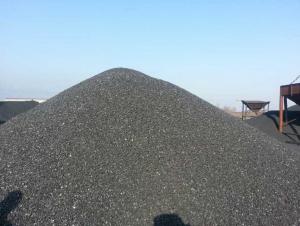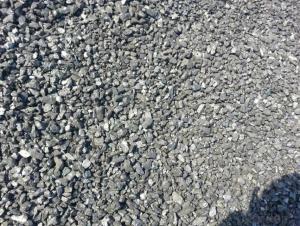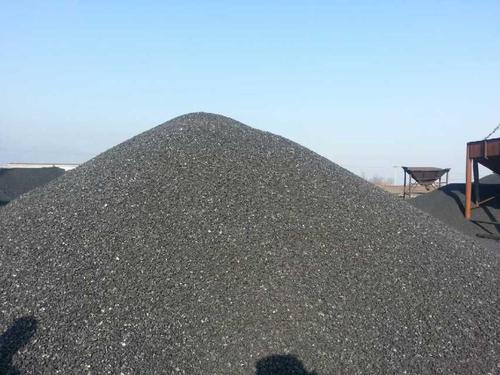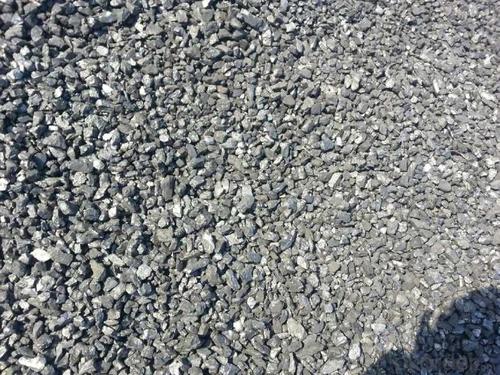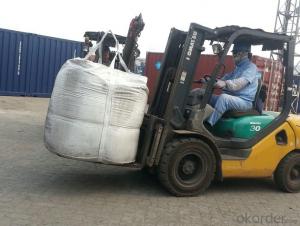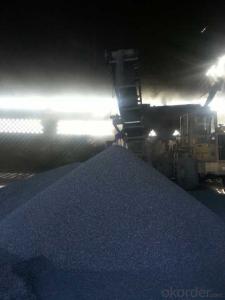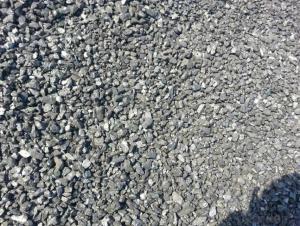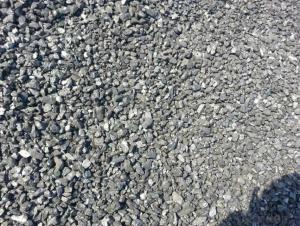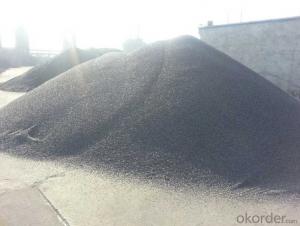Injection Carbon FC90-95 with stable quality
- Loading Port:
- Tianjin
- Payment Terms:
- TT OR LC
- Min Order Qty:
- 20 m.t.
- Supply Capability:
- 3000 m.t./month
OKorder Service Pledge
OKorder Financial Service
You Might Also Like
Packaging & Delivery
25kgs/50kgs/1ton per bag or as buyer's request
Specifications
Calcined Anthracite
Fixed carbon: 90%-95%
S: 0.5% max
Size: 0-3. 3-5.3-15 or as request
It used the high quality anthracite as raw materials through high temperature calcined at over 2000 by the DC electric calciner with results in eliminating the moisture and volatile matter from anthracite efficiently, improving the density and the electric conductivity and strengthening the mechanical strength and anti-oxidation. It has good characteristics with low ash, low resistvity, low sulphur, high carbon and high density. It is the best material for high quality carbon products.
Advantage and competitive of caclined anthracite:
1. strong supply capability
2. fast transportation
3. lower and reasonable price for your reference
4.low sulphur, low ash
5.fixed carbon:95% -90%
6..sulphur:lower than 0.3%
General Specification of Calcined Anthracite:
| FC | 95 | 94 | 93 | 92 | 90 |
| ASH | 4 | 5 | 6 | 6.5 | 8.5 |
| V.M. | 1 | 1 | 1 | 1.5 | 1.5 |
| S | 0.3 | 0.3 | 0.3 | 0.35 | 0.35 |
| MOISTURE | 0.5 | 0.5 | 0.5 | 0.5 | 0.5 |
Pictures
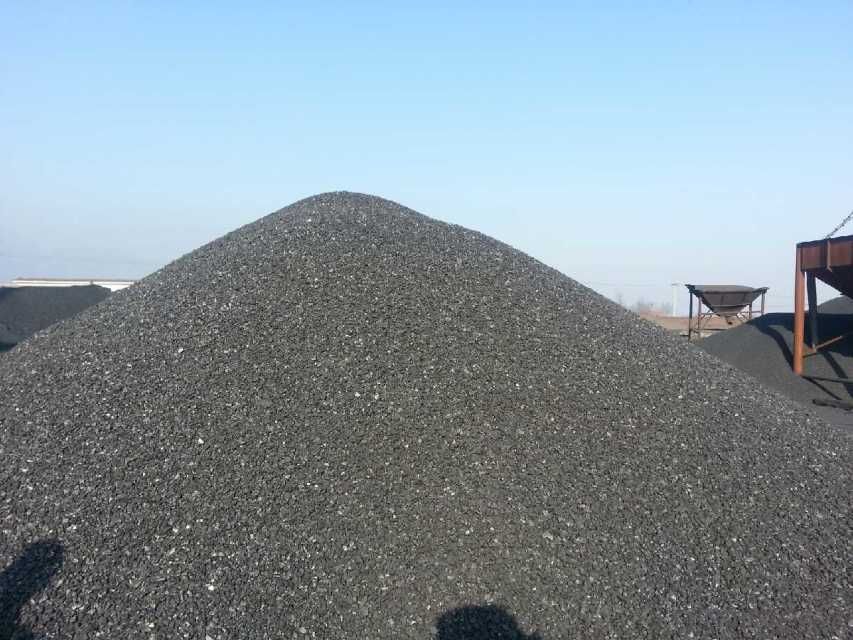
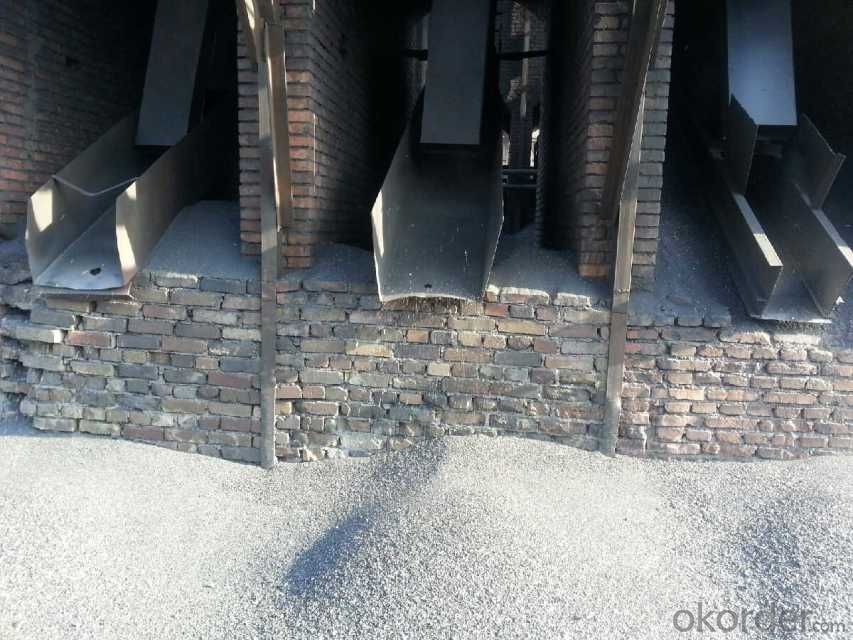
- Q: What is the role of carbon in the formation of diamonds?
- The role of carbon in the formation of diamonds is crucial as it is the sole element responsible for the creation of these precious gemstones. Diamonds are formed deep within the Earth's mantle, under extreme pressure and temperature conditions. Carbon atoms, when subjected to immense pressure and heat, undergo a process called graphitization, where they rearrange their atomic structure and transform into a crystal lattice arrangement, giving rise to the formation of diamonds. The process starts with carbon-rich materials, such as organic matter or carbon-bearing minerals, being exposed to the intense heat and pressure found deep within the Earth's mantle, typically at depths of around 150 to 200 kilometers. Under these conditions, the carbon atoms within these materials are forced to bond together in a unique way, forming the rigid, three-dimensional lattice structure characteristic of diamonds. The formation of diamonds requires specific geological conditions, including temperatures above 900 degrees Celsius and pressures exceeding 725,000 pounds per square inch (50,000 atmospheres). These extreme conditions are typically found in areas where ancient tectonic plates collide or in volcanic eruptions that bring diamonds to the Earth's surface. Carbon's ability to form strong covalent bonds with other carbon atoms is what allows the transformation into diamonds. Each carbon atom forms four strong covalent bonds, creating a tetrahedral structure. This strong bonding allows diamonds to possess exceptional hardness, making them one of the hardest substances known to man. In summary, carbon plays an essential role in the formation of diamonds, undergoing graphitization under immense pressure and temperature conditions to create the unique crystal lattice structure that gives diamonds their extraordinary properties. Without carbon, the formation of diamonds as we know them would not be possible.
- Q: How does deforestation contribute to carbon dioxide levels in the atmosphere?
- Deforestation contributes to carbon dioxide levels in the atmosphere primarily through the release of stored carbon in trees and vegetation. When forests are cut down or burned, the carbon stored in their biomass is released as carbon dioxide, a greenhouse gas. Additionally, trees play a crucial role in absorbing carbon dioxide during photosynthesis, so their removal reduces the capacity to remove this greenhouse gas from the atmosphere. Therefore, deforestation not only releases carbon dioxide but also diminishes the natural carbon sinks, leading to an overall increase in carbon dioxide levels in the atmosphere.
- Q: What are carbon nanotubes?
- Carbon nanotubes, characterized by their unique structure, are cylindrical formations made solely of carbon atoms. These nanotubes, aptly named due to their minuscule diameter of a few nanometers, can attain remarkable lengths of several centimeters. The distinctive structure of carbon nanotubes grants them extraordinary properties. They exhibit exceptional strength and mechanical characteristics, surpassing steel by a factor of 100 while only weighing one-sixth as much. Furthermore, they possess remarkable thermal and electrical conductivity. Categorically, carbon nanotubes can be classified into two primary types: single-walled carbon nanotubes (SWCNTs) and multi-walled carbon nanotubes (MWCNTs). Single-walled nanotubes consist of a solitary layer of rolled carbon atoms, whereas multi-walled nanotubes comprise several layers of these nested formations. The exceptional properties of carbon nanotubes enable their diverse applications across numerous fields. In the realm of electronics, their high electrical conductivity renders them suitable for use as transistors and interconnects. Additionally, their substantial surface area and electrical conductivity make them ideal for incorporation into energy storage devices like batteries and supercapacitors. Within materials science, carbon nanotubes reinforce composites, enhancing their strength and reducing their weight. Moreover, they exhibit potential applications in medicine as drug delivery systems and imaging agents. Ongoing research endeavors strive to deepen our understanding and harness the potential of carbon nanotubes. Nonetheless, challenges persist regarding their large-scale production, cost-effectiveness, and possible health and environmental ramifications. Overall, carbon nanotubes represent an exhilarating and promising domain of nanotechnology, offering vast possibilities for advancements in various fields.
- Q: Carbon steel with carbon steel, carbon steel yuan yuan is the same? The trouble to know the answer urgently
- Not the same! Simply say: the high quality carbon steel or carbon steel. Specifically speaking is the carbon content of less than 0.08%. and carbon steel compared to its quality is excellent, there are strict requirements to ensure the chemical composition and mechanical properties, phosphorus and sulfur are high quality carbon steel eliminating lower impurity content.
- Q: Search for a summary of the importance of carbon in life. If you write well, you can add points,
- The carbon containing compounds exist in hundreds of thousands, divided into inorganic and organic compounds in two categories, known as carbon containing inorganic substances in daily life and industrial and agricultural production is the raw material of carbon calcium carbonate as food additive sodium, sodium bicarbonate, calcium carbonate and lime material acetylene gas (acetylene), chemical fertilizer ammonium bicarbonate, chemical gases such as carbon dioxide.
- Q: How does carbon dioxide affect the Earth's climate?
- The Earth's climate is significantly affected by carbon dioxide (CO2), a greenhouse gas. When released into the atmosphere through natural and human activities like deforestation, burning fossil fuels, and industrial processes, carbon dioxide traps heat from the sun and prevents it from escaping into space. This process is commonly referred to as the greenhouse effect. The accumulation of carbon dioxide in the atmosphere leads to a rise in global temperatures, resulting in climate change. As CO2 levels increase, more heat gets trapped, causing the Earth's average temperature to rise over time. This phenomenon is known as global warming. The consequences of increased carbon dioxide levels and subsequent climate change are extensive. Rising temperatures cause glaciers and polar ice caps to melt, contributing to a rise in sea levels. This can lead to coastal flooding, displacement of communities, and loss of biodiversity. Moreover, altered weather patterns, including more frequent and intense heatwaves, droughts, and extreme weather events like hurricanes and storms, are also associated with increased carbon dioxide levels. These events can have devastating impacts on ecosystems, agriculture, and human settlements. Furthermore, elevated CO2 levels also impact the chemistry of the oceans, making them more acidic through a process called ocean acidification. This poses a threat to marine life, especially organisms with calcium carbonate shells, such as corals and shellfish. To mitigate the impacts of carbon dioxide on the Earth's climate, it is crucial to reduce greenhouse gas emissions. This can be accomplished by transitioning to renewable energy sources, improving energy efficiency, promoting sustainable land use practices, and adopting cleaner technologies. Additionally, initiatives like afforestation and reforestation can help absorb CO2 from the atmosphere, acting as carbon sinks. Taking action to address the issue of carbon dioxide and its impact on the Earth's climate is vital to protect the planet's ecosystems, biodiversity, and human societies. By reducing carbon emissions, we can lessen the effects of climate change and work towards a more sustainable future.
- Q: What is carbon black rubber?
- Carbon black rubber is a type of rubber that contains carbon black as an additive. Carbon black is a finely divided form of carbon, produced by the incomplete combustion of hydrocarbon fuels. It is added to rubber compounds to improve its mechanical properties, such as tensile strength, abrasion resistance, and resilience. The carbon black particles are dispersed within the rubber matrix, providing reinforcement and enhancing its durability and performance. Carbon black rubber is commonly used in the production of tires, conveyor belts, gaskets, seals, and various automotive and industrial rubber products.
- Q: How to test aldehyde group and carbon carbon double bond in acrolein
- Can be oxidized into carboxyl aldehyde with silver ammonia solution or new copper hydroxide, then the bromine test double bonds, because the aldehyde will affect the bond detection, and will not affect the detection of double bond of carboxyl.
- Q: What is carbon black used for?
- Carbon black is primarily used as a pigment in various industries, such as rubber, plastics, printing inks, and coatings. It provides color, enhances durability, and improves the overall performance of the products it is incorporated into.
- Q: What are the different types of carbon-based air pollutants?
- There are several different types of carbon-based air pollutants that contribute to air pollution. These include: 1. Carbon Monoxide (CO): This is a colorless, odorless gas produced by the incomplete combustion of fossil fuels, such as gasoline, coal, and wood. It is highly toxic and can be harmful to human health, particularly when inhaled in high concentrations. 2. Carbon Dioxide (CO2): This is a greenhouse gas that is naturally present in the Earth's atmosphere. However, human activities such as the burning of fossil fuels and deforestation have significantly increased its levels, leading to climate change and global warming. 3. Volatile Organic Compounds (VOCs): These are organic chemicals that easily vaporize at room temperature. They are released into the air by various sources, including paints, solvents, gasoline, and industrial processes. VOCs contribute to the formation of ground-level ozone, which is a major component of smog and can be harmful to human health. 4. Methane (CH4): This is another greenhouse gas that is primarily produced by the decomposition of organic materials in landfills, as well as the extraction and transportation of natural gas. Methane is a potent greenhouse gas, with a much higher warming potential than carbon dioxide. 5. Polycyclic Aromatic Hydrocarbons (PAHs): These are a group of chemicals that are formed during the incomplete combustion of organic materials, such as coal, oil, and gas. PAHs are released into the air through vehicle exhaust, industrial processes, and the burning of fossil fuels. They are known to be carcinogenic and can have harmful effects on human health. 6. Formaldehyde (HCHO): This is a colorless gas that is used in the production of resins and plastics, as well as in some building materials and household products. It is released into the air through the burning of fuels, cigarette smoke, and the off-gassing of certain products. Formaldehyde is a known respiratory irritant and can cause allergic reactions and other health issues. These are just some of the carbon-based air pollutants that contribute to air pollution. It is important to reduce emissions of these pollutants through the use of cleaner technologies, energy-efficient practices, and the promotion of renewable energy sources to mitigate their negative impacts on both human health and the environment.
Send your message to us
Injection Carbon FC90-95 with stable quality
- Loading Port:
- Tianjin
- Payment Terms:
- TT OR LC
- Min Order Qty:
- 20 m.t.
- Supply Capability:
- 3000 m.t./month
OKorder Service Pledge
OKorder Financial Service
Similar products
Hot products
Hot Searches
